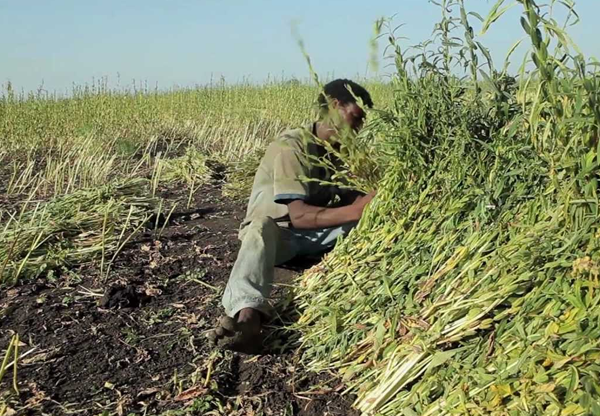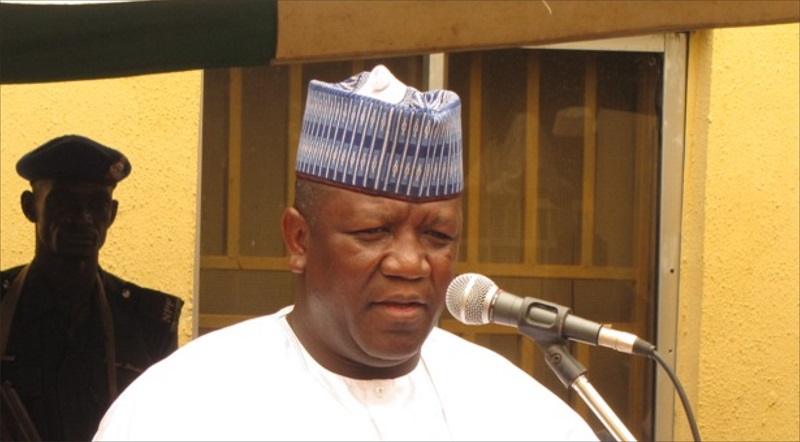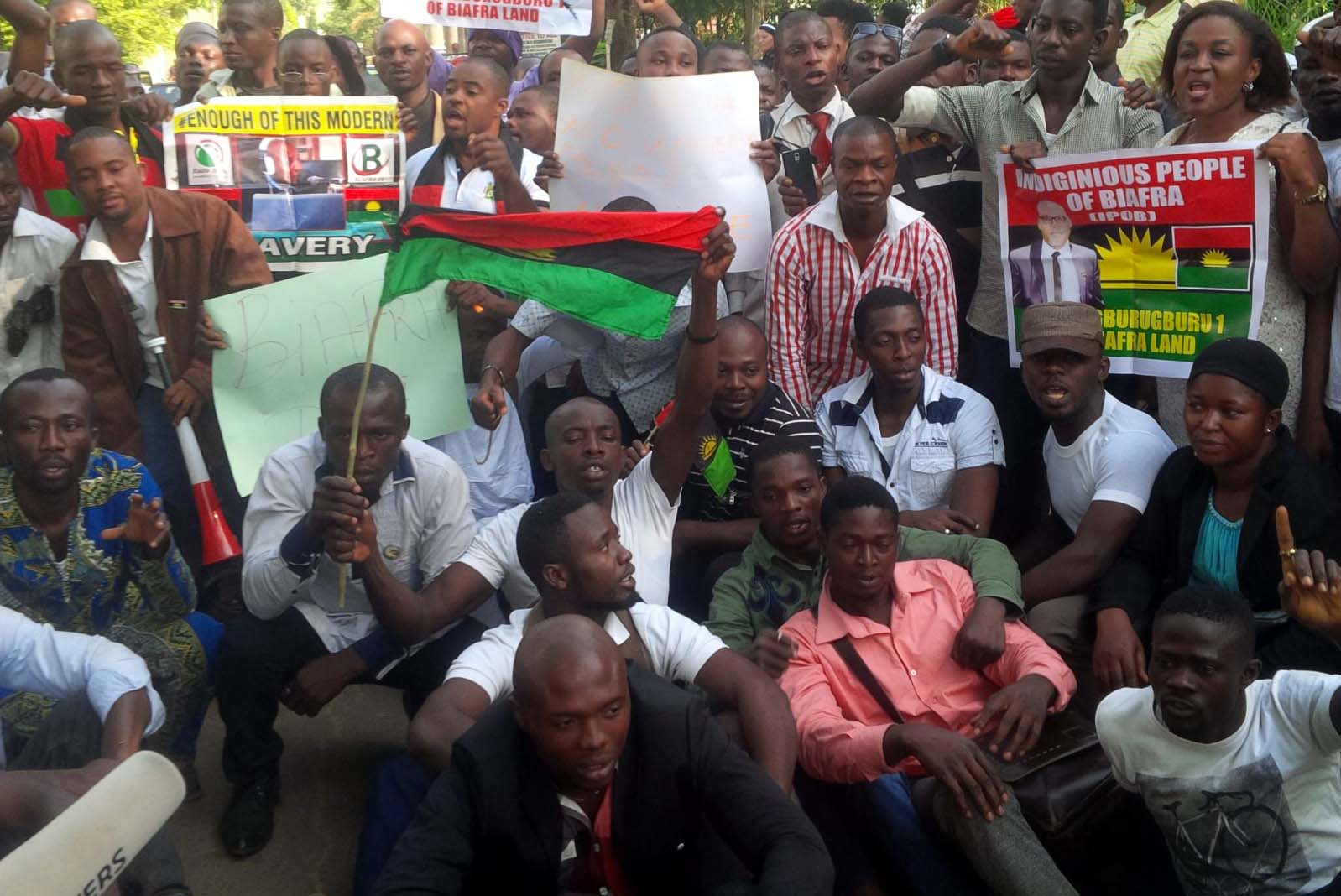Sesame is popular amongst African farmers and is commonly referred to as the ‘survivor’ plant – it can resist drought where other crops fail and it doesn’t require much fertiliser making it less expensive to cultivate. It is this remarkable drought resistance, requiring 66 percent less water than grain sorghum and an impressive 75 percent less water than corn to cultivate, that makes it noteworthy of its tag as the ‘survivor plant’.
Its hardiness is further demonstrated in instances where researchers have found that sesame cultivation reduces nematode populations within the soil environment. This potential pest resistance property is a further boost in lowering production costs, and an attraction for farmers in low-income countries in Africa.
Growth and agronomic characteristics
Sesame (Sesamumindicum) is a broadleaf summer crop that belongs to the Pedaliaceae plant family which has bell-shaped flowers and opposite leaves. It is an erect annual plant that can reach between 4 -7 feet in height at maturity. On average, sesame varieties grown commercially require 90 to 110 days from planting to reach physiological maturity.
Advertisement
Sesame is adapted to fertile, well-drained soils but is not salt tolerant and medium textured soils are most favourable. Sesame prefers neutral to slightly alkaline pH, with moderate fertility and will not thrive properly in heavy clay soils or irrigation water containing high concentrations of salt. Cultivation requires a warm, moist, weed-free seedbed, with raised beds being the most preferred to allow for good soil moisture around its extensive root system while providing a method of keeping the moisture off the stems. Generally, the seedbed preparation is similar to that of cotton plantations as they tend to have similar moisture requirements.
Planting is the most critical aspect of growing sesame. And farmers will need to examine poorly established stands and replant them. The application of a balanced commercial fertiliser at planting time is advisable and only necessary on soils of low to moderate fertility for satisfactory production or stands. At maturity, the sesame seeds need to be harvested as dry as possible and stored at 6% moisture or less, which improves their postharvest conditions, as the small seeds are become compacted, limiting the flow of air around them and could become rancid as a result.
Versatility and utility
Advertisement
Sesame seeds are very versatile in their utility and contain 50-55 percent oil and 25 percent protein. Sesame has one of the highest oil contents of any seed, with a rich, nutty flavour, it is a common ingredient in cuisines across the world. The seeds are used in baking, to top bread, buns and bagels, in crackers and in cakes. The ground seeds are used in East African cuisine in soups, fish dishes and used as condiments. The oils are also used in salad dressings and cooking oils, as well as making some margarines.
Sesame oil keeps well and resists rancidity even in many parts of the world where there is inadequate refrigeration, due to the presence of an antioxidant, ‘sesamol’. Industrial uses of sesame oil include its utility in manufacturing paints, soaps, cosmetics, perfumes, bath oils, insecticides and pharmaceuticals (as a vehicle for drug delivery). Furthermore, sesame seed oil is being investigated as a cell-growth regulator that slows down cell growth and replication.
Sesame production in Africa and Olam’s ‘Sustainable Villages Programme’
Olam has been in the sesame business for more than a decade and enjoys a strong leadership position and is a preferred supplier to some of the world’s big sesame customers. Sesame forms a core part of its Edible Nuts business unit, in addition to cashews, peanuts almonds and hazelnuts, and Olam’s strong presence in origins across the globe enables it to offer reliable, year-round supplies at competitive prices.
Advertisement
Nearly 55 percent of the world sesame production is in Africa, with Sudan in pole position and other countries such as Ethiopia, Tanzania, Burkina Faso, Mali and Nigeria also recognised as notable producers and exporters from the continent. However, the yield per hectare in Africa is still low (between 150-250kg) and remains a critical factor that could be improved upon. The gap in yield quality and farm losses for producers exists in part because of critical factors such as the knowledge gap, poor crop management practices, and use of appropriate technologies.
In view of this Olam launched the “Sustainable Villages Programme” in Nigeria 2011 to improve the yield ratios of sesame production and the deliver a value-based agro-enterprise that is beneficial across the entire production chain. The crop from this programme was channelled to Olam’s multi-billion naira processing facility in Sagamu, Ogun State. The programme involved some 1,500 farmers in 2016 of which 39% were women. The programme supported farmers from Jigawa, Bauchi, Nasarawa and Benue states of Nigeria.
The overview of the programme has been one of a success story across several variables, including the critical factor of improved crop yield. Over the 2016 period in review (see summary table below), 950 farmers were trained in the areas of good agricultural practices and provided with free seeds to plant along with farming inputs like Fertilizer and herbicides, consequently, there was a high correlation between their newly acquired knowledge and the increase in crop yield. A total of 350 tonnes was procured from 1,200 hectares, and notably, this yield was a 100 per cent traceable. Olam’s programme also focused on the socio-economic conditions of small-hold farmers which had both direct and indirect impact on a farmer’s overall productivity and wellbeing of his family. Notably, investments in both educational and water and sanitation infrastructure were made for the benefit of the farming communities.
Summary of the Key production facts (2016)
Advertisement
Sesame seed farming in Africa has the potential to grow. This growth can be seen both in the number of smallholder and commercial farmers engaging in it across a good number of countries as well as the net volumes of the viable crop that is harvested and processed. Africa has an enormous advantage over its main Asian competitors because of the availability of arable land and the presence of more affordable labour. These two variables, in conjunction with the sesame plant’s naturally robust and hardy physiology and remarkable versatility,make it truly a survivor plant for agriculture on the continent.
Advertisement
It does, however, call for a concerted approach to harness this potential and address the critical need for an improved yield. The highlighted Olam intervention above, using an integrated programme to build collective capacity of farmers and improve their socio-economic conditions is a great example of the kind of meaningful engagement that is needed. This comprehensive approach of the Sustainable ‘Villages Programme’ stands to meet the deficit in crop yield and productivity, by addressing all three of the earlier highlighted critical factors of bridging the knowledge gap, improving the poor crop management practices, and increasing the use of appropriate technologies.
Advertisement
These three factors underpinning the potential for African farmers to improve their sesame crop yields is not an exhaustive one but is nonetheless illustrative of a simplified approach that can have significant results on the continent. Olam’s Sustainable Villages Programme is an embodiment of this approach and stands to produce the desired results over time as it is rolled out in other farming communities.
Adefeko is the chairman of NACCIMA Export Advocacy Group
Advertisement
Views expressed by contributors are strictly personal and not of TheCable.









